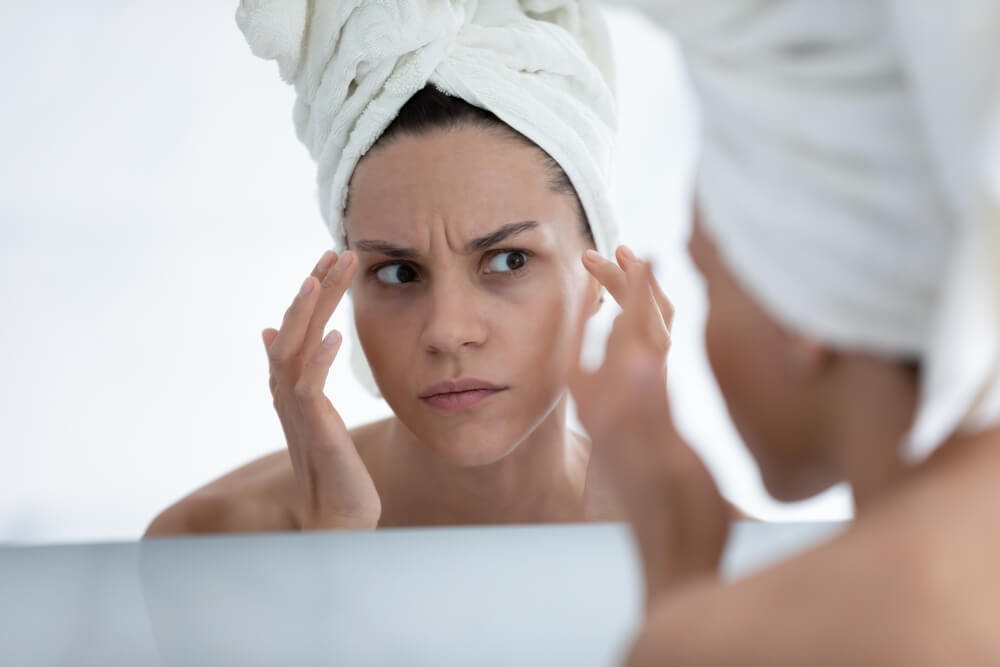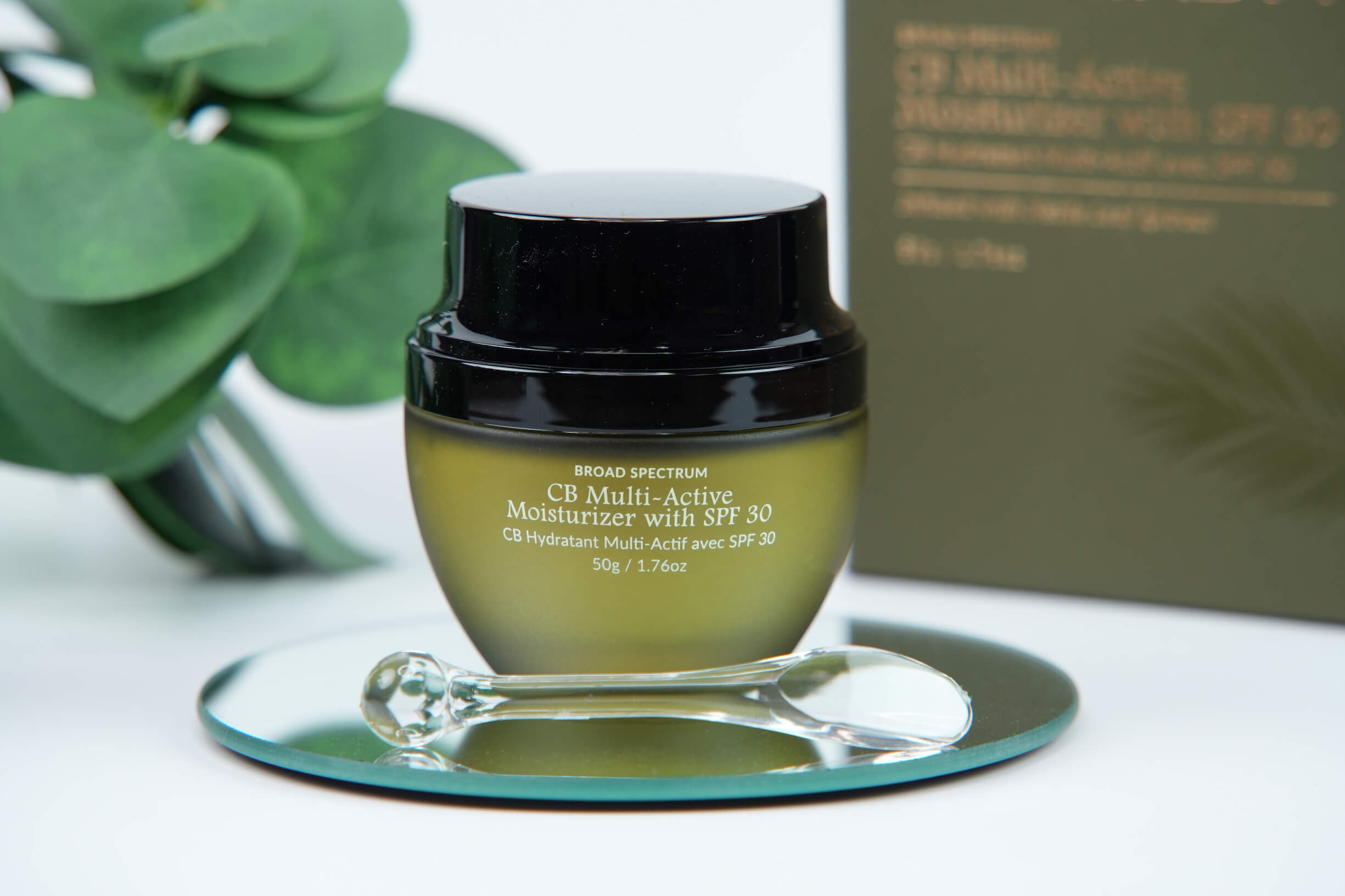Published: February 15, 2024

People put together their skincare routines with the best of intentions. They strive to create routines that will bring out the very best in their skin, leaving them looking radiant and healthy.
Unfortunately, in the quest for a flawless complexion, it’s easy to get caught up in bad habits or listen to the wrong advice. The result is a skincare routine that could potentially be causing more harm than good.
Where does your own skincare routine stand in all of this? Read on as CBGärdN talks you through some of the most common mistakes that people make.
Over-Cleansing or Not Cleansing Properly

Cleansing is one of the most important steps of a skincare routine. However, it’s an easy one to get wrong, either by not cleansing properly or by over-cleansing. Both extremes can end up harming your skin.
How?
Well, failing to properly cleanse means that your skin’s surface will still be covered with bacteria, dirt, dead skin cells, and other impurities. If you apply other skincare products over this layer, you’ll end up trapping it all in, pushing all of those unwanted particles deeper into your pores. The result? Dullness, congestion, clogged pores, and breakouts, along with free radical damage that speeds up the skin aging process.
On the other hand, over-cleansing can be just as damaging. It strips away the skin’s natural protective barrier, leaving the skin vulnerable to environmental aggressors.
So, how can you find the perfect balance when it comes to the cleansing stage of your skincare routine?
It begins with ensuring that you’re using the right cleanser. You need a formula that will thoroughly clean your skin, but not so much that your skin is left susceptible to damage. This is where the CB Facial Cleanser excels. It will leave your skin looking fresh and dewy!
Knowing how often to cleanse is vital too. Ideally, you should be doing this twice a day, once in the morning and then again at night. Cleansing more often could potentially harm your skin, while skipping your morning cleanse and then continuing to apply products to your skin will, once again, lead to congestion.
Cleansing With Hot Water
While we’re on the topic of cleansing…
Many people do so with hot water. It’s easy to understand why – it’s so much more comfortable than cleansing with cold water!
However, this is another mistake that could be doing your skin some serious harm. Studies confirm that when it comes to the skin, hot water should be avoided at all costs.
Why? Because of how hot water removes the protective coating that covers the skin. This not only leaves the skin more prone to sensitivities since irritants will be able to make their way in so much more easily, but it’s also a precursor to dehydration. Without that protective layer over your skin, water will evaporate away at a much faster rate.
Fortunately, this is an easy mistake to rectify. The next time you’re carrying out your skincare routine, make sure that only lukewarm water touches your skin. It may not feel quite as comfortable but your skin will look and feel all the better for it!
Over-Exfoliating

We’ve talked about over-cleansing, so now let’s move on to over-exfoliating. Again, just like cleansing, exfoliation is a key part of any skincare routine. It’s the best way to remove dead skin cells from the skin and within the pores. Failing to do so will only leave you with clogged pores, resulting in breakouts.
There’s no denying the instant gratification that exfoliation provides. Exfoliate your skin, look in the mirror, and you’ll be rewarded with a complexion that’s immediately brighter and smoother. This is exactly why many people tend to go overboard, exfoliating more often in a quest to maintain that fresh and smooth appearance.
However, just like with over-cleansing, over-exfoliating severely damages the skin barrier. In fact, it does this even more than over-cleansing does.
Again, just like with over-cleansing, over-exfoliating can happen when you either exfoliate too often or you use an exfoliator that’s too harsh for your skin. So, start by making sure that the exfoliator you’re using is safe and gentle. Go with a formula that isn’t going to tear at or irritate your skin, such as the CB Microexfoliant Peel. It’s suitable for all skin types, making it an easy option if you aren’t sure about which exfoliator to use.
Then, make sure that you’re using it the right amount. The frequency you exfoliate should be in line with your skin type. If you have oily skin, you’ll probably need to exfoliate two to three times a week. Meanwhile, those with dry skin only need to exfoliate once or twice a week. If your skin starts to look or feel inflamed, cut back on exfoliation until your complexion recovers.
Using Products That Aren’t Designed For Your Skin Type

It can be tempting to purchase the latest must-have skincare product, simply based on all of the hype that surrounds it. However, unless that product is suitable for your skin type, you’ll only end up harming your skin.
Each skin type has its own needs. This is exactly why skin type categories exist – it makes it much easier to figure out your skin’s requirements. For example, if you have dry skin, your skincare routine needs to compensate for your skin’s lack of sebum by giving it plenty of fatty acids and moisturizing ingredients. The CB Bio-Restorative Crème is great for this!
Meanwhile, products for oily skin will be designed to de-grease the complexion. This is the opposite of what dry skin needs. Use these formulas on dry skin and your skin will only end up even drier and flakier.
The same applies the other way around. If you have oily skin, products designed for dry skin will be way too thick and heavy for you. You’ll end up blocking your pores and triggering breakouts.
If a product doesn’t state which skin type it has been formulated for, don’t assume that this means that it’s safe to use on your skin. Instead, do a little extra digging. Trawl through its ingredient list and make sure that all of the compounds on there will play nicely with your skin type.
Layering On Too Many Skincare Products

Enthralled by the 15-step skincare routine you’ve just seen on TikTok? There’s nothing wrong with following a long and complex skincare routine but, at the same time, you need to make sure that you’re not overloading your skin. Sure, long skincare routines can be great, but they’re not for everyone.
First things first – figuring out if your skincare routine is too much for your skin. How? By assessing the condition of your skin. If you’ve been struggling with congestion, clogged pores, or sensitivities, then there’s a good chance that your skincare routine isn’t working in the way that you’d hoped.
If this is the case, it’s time to strip your skincare routine back to basics. Start with a gentle cleanser, follow up with a moisturizer, and top it all off with a sunscreen. Those are the three most important products that you need to be using. As always, make sure that the formulas you pick are suitable for your skin type.
Once your skin is looking better, you can work on expanding your routine. However, don’t do this all at once. Instead, only introduce one new product every week or two. Give your skin some time to grow accustomed to those ingredients while keeping an eye on how it’s reacting.
Over time, you may be able to build up to a 15-step routine but don’t rush this. After all, when it comes to your skincare routine, quality and results are much more important than quantity.
Using Expired Products
If you’ve had some of your skincare products for a year or longer, there’s a good chance that those products may have expired. Many don’t realize that all skincare products have a shelf life, meaning that using expired products is a problem that’s more common than you’d think.
What’s the big deal?
Expired products spell bad news for your skin in a few different ways. Firstly, there’s a good chance that by this stage, they’ll be contaminated with bacteria. Each time you apply that product, you’ll be covering your face with a layer of bacteria.
Time also takes its toll on the efficacy of skincare ingredients. Many simply stop functioning in the way that they should after a certain amount of time. Others oxidize as light and oxygen slowly work their way into the product. Not only will those oxidized ingredients fail to provide benefits, but they could also trigger oxidative stress in the skin. This causes inflammation and accelerates the rate at which the skin ages.
So, how can you tell if your skincare products have expired?
All skincare products should have a PAO symbol printed on their packaging. This will tell you how long a product will last for once it has been opened, with the timeframe indicated in months. If a product states “PAO 12M”, this means that you should stop using it 12 months after it has been opened.
Unsure about whether or not your products have expired? If they look or smell any different, then there’s a good chance that they have oxidized. However, even if they look the same, it would be worth trying to work out when you bought that product and then looking up general PAO numbers for that type of product.
Create the Perfect Skincare Routine With CBGärdN
Nobody wants to be following a skincare routine that’s actually harming their skin but, sadly, this is often the case. This makes it so important to regularly reassess the products that you’re using, along with how your skin is responding to your routine, so that you can figure out if you’re going wrong anywhere. As soon as you realize that you’re making a mistake with your skincare routine, put things right immediately so that your complexion can once again radiate with happiness and health!
Click here to browse more bestselling skincare products from CBGärdN.
